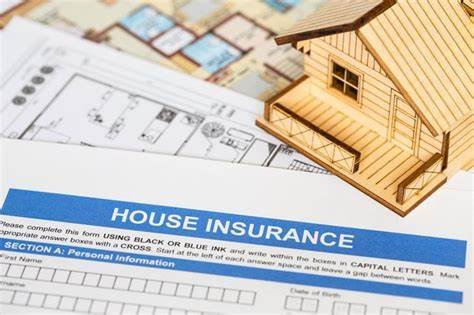Homeowners Insurance: Homeowners insurance is a critical investment in protecting your property, but it can also be a significant expense.
Many homeowners believe that cutting costs on insurance means sacrificing coverage.
However, with smart strategies, you can lower your homeowner’s insurance rates without compromising the protection you need. This guide explores actionable steps to save money while maintaining robust coverage for your home.
Read: Small Business Insurance 2024/2025
Lower Your Homeowners Insurance Rates Without Sacrificing Coverage
1. Shop Around for the Best Rates
Insurance rates vary significantly depending on the provider. One of the easiest ways to lower your premium is to compare quotes from multiple insurance companies. When shopping for a policy:
- Look for Discounts: Many insurers offer discounts for bundling policies, having a claims-free history, or installing safety features in your home.
- Use Online Comparison Tools: Websites like Policygenius or Insure.com allow you to compare rates easily.
- Consider Local Providers: Sometimes, smaller or regional insurers offer competitive rates for comparable coverage.
Pro Tip:
Don’t just focus on price. Ensure the company has a good reputation for handling claims and providing customer service.
2. Increase Your Deductible
Your deductible is the amount you pay out of pocket before your insurance kicks in. Opting for a higher deductible can result in lower monthly premiums. For example:
- Raising your deductible from $500 to $1,000 could save you up to 25% on your policy.
- A $2,500 deductible might yield even greater savings.
However, ensure that you can afford the higher deductible in case of an emergency.
3. Bundle Your Policies
Many insurance companies offer discounts if you bundle your homeowners insurance with other policies, such as auto or life insurance. Bundling not only simplifies your paperwork but can also save you up to 20% on your premiums.
4. Make Your Home Safer
Insurance companies reward homeowners who take proactive steps to reduce risks. By enhancing your home’s safety, you could qualify for significant discounts. Consider these upgrades:
- Install Security Systems: Alarm systems, motion detectors, and cameras can deter burglaries.
- Upgrade Smoke Detectors and Fire Alarms: Modern systems reduce the likelihood of fire damage.
- Reinforce Your Roof: Storm-resistant roofing materials can lower premiums in areas prone to severe weather.
- Add Deadbolts: Simple upgrades like deadbolt locks can improve security and cut costs.
Check with your insurance provider about specific discounts for safety improvements.
5. Maintain a Good Credit Score
Believe it or not, your credit score can impact your homeowners insurance rates. Insurers use credit-based insurance scores to assess risk. To improve your credit score:
- Pay bills on time.
- Keep your credit card balances low.
- Regularly check your credit report for errors.
A higher credit score often translates to lower premiums, so maintaining good financial habits can pay off.
6. Avoid Small Claims
Filing multiple small claims can increase your premiums over time. If possible, cover minor repairs out of pocket to avoid unnecessary claims. Reserve your insurance for major incidents.
Why This Works:
Insurers view homeowners with a long claims-free history as lower risk, which often leads to discounts.
7. Ask About Discounts
Insurance companies offer various discounts that you might not be aware of. Be proactive and ask your provider about:
- Loyalty Discounts: For staying with the same insurer over time.
- New Home Discounts: For recently purchased or built homes.
- Claims-Free Discounts: For maintaining a clean claims history.
- Senior Discounts: For homeowners over a certain age.
8. Review and Update Your Policy Annually
Your insurance needs may change over time. Reviewing your policy annually ensures you’re not overpaying for unnecessary coverage. For example:
- If you’ve paid off your mortgage, you might no longer need certain coverage types.
- If the value of your home has decreased, you might be able to lower your coverage limits.
Work with your insurance agent to adjust your policy to reflect your current needs.
9. Consider Private Mortgage Insurance (PMI)
If you’re still paying PMI as part of your mortgage, eliminating it can reduce your overall insurance costs. Once you’ve built at least 20% equity in your home, contact your lender to remove PMI.
10. Improve Your Home’s Resilience to Natural Disasters
If you live in an area prone to natural disasters, taking steps to minimize damage risks can lower your insurance rates. Some options include:
- Installing storm shutters.
- Elevating your home to reduce flood risk.
- Reinforcing your foundation against earthquakes.
Many insurers offer discounts for homes that are better equipped to withstand natural disasters.
11. Take Advantage of Group Insurance Plans
Some employers, alumni associations, or professional organizations offer group insurance plans with discounted rates. Check if you qualify for any of these programs.
12. Pay Your Premium Annually
Paying your premium in full rather than monthly can often save you money. Many insurers offer discounts for annual or semi-annual payments.
13. Work with an Independent Insurance Agent
An independent agent works with multiple insurance providers and can help you find the best rates for your needs. They can also identify discounts you might miss on your own.
Final Thoughts
Lowering your homeowners insurance rates doesn’t have to mean sacrificing coverage. By shopping around, maintaining your home, and taking advantage of discounts, you can reduce costs while still protecting your investment.
Regularly reviewing your policy and staying proactive can lead to long-term savings and peace of mind.

Can you be more specific about the content of your enticle? After reading it, I still have some doubts. Hope you can help me. https://www.binance.info/en-IN/register?ref=UM6SMJM3